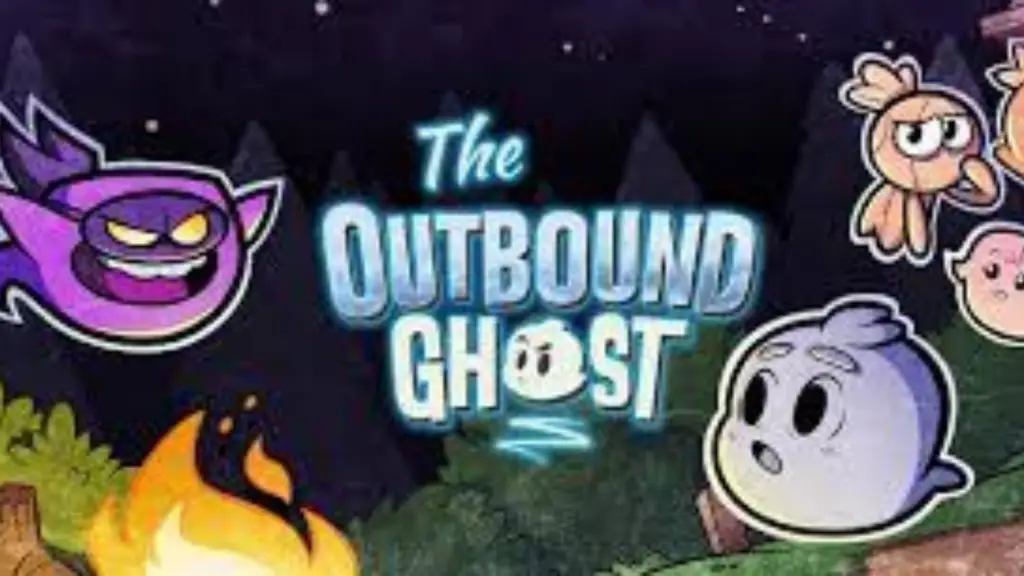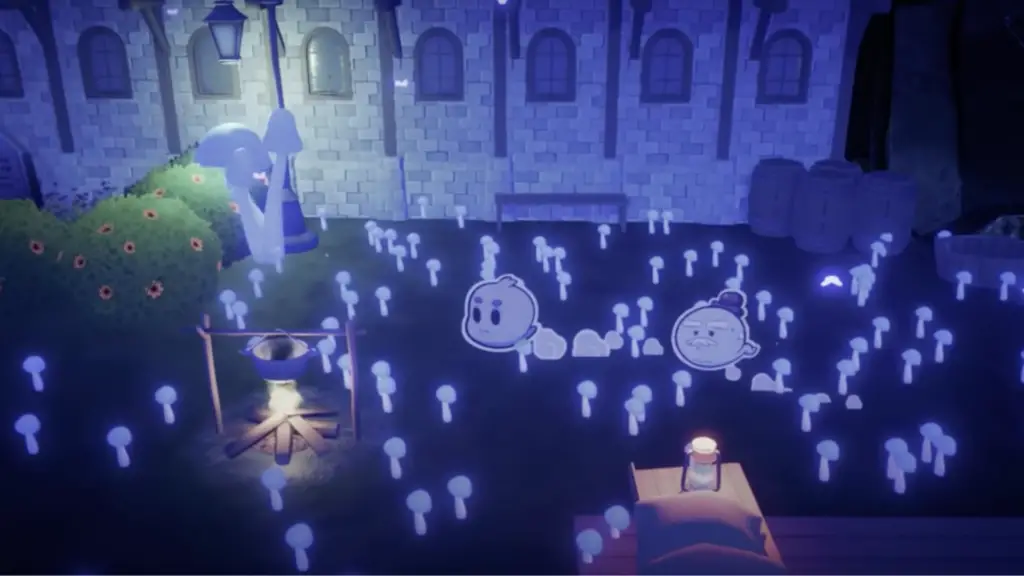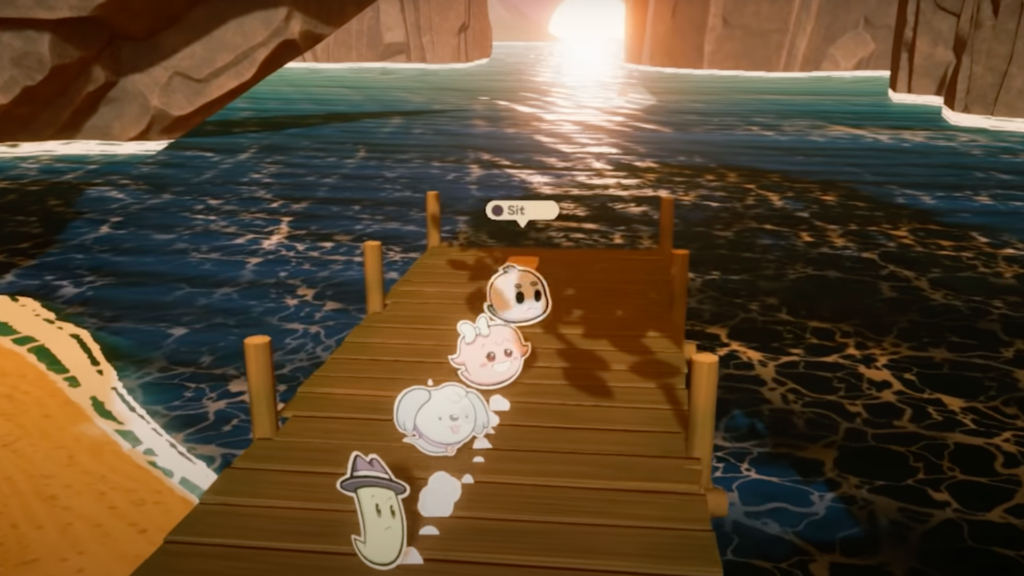The Outbound Ghost Review: A solid gem in the rough

While Kickstarter is not quite the juggernaut it once was, that should not be taken to mean that good games are no longer being funded on the website. Rather, you just do not see the explosive hits like Yooka-Laylee, Shenmue III, and Mighty No. 9, and instead, some of the best games are the cheaper ones. Heck, Undertale itself is one of the best indie games, and it was made on a fairly modest budget.
The initial pitch for a lot of games is either that they are sequels, remakes, or homages, and today’s game – The Outbound Ghost – is the latter. This game wears its inspirations on its sleeves, made by a developer who got into game development at a very early age. This game is based primarily on the N64 RPG Paper Mario, but how does it compare to its inspiration?
The story meanders a little too much

Let’s get this one out of the way, just so we can end strong. I think this is where the game stumbles the most. The premise is a good enough vehicle to get you through the game, but I feel like it could have done more to really get my motor going, you know? In this game, you play as a recently departed ghost who, much like in Paper Mario, is a silent protagonist. However, an added wrinkle is that this character… has amnesia!
Amnesia is not my favorite storytelling gimmick, but to be fair, the mystery of how he died is interesting enough. You later find another with amnesia, which at least tells us that there is something about their ‘ghosthood’ that causes them to have amnesia where others do not. It certainly was enough to keep me going to find out more. Another layer of the story is a mass murderer who kills off an entire village, which leads some to be distrustful of the amnesiac protagonist.
In this world, the ghosts are those who were not able to move on to the afterlife, instead forced to inhabit the mortal world until they can resolve whatever is holding them back. Obviously, if you and your entire village were just slaughtered, that would be something that keeps you from moving on. It’d be enough for me, anyway.
Sadly, I felt that the story just didn’t take off the way I’d like it to. There’s just not enough mysteries to excite me, and this kind of story is perfect for mysteries. When going through this game, your best bet is to go in with low expectations for the story. It’s not bad by any means, but it could be improved.
The style is a mix of old and new

At a glance, it is immediately obvious to anyone who has played Paper Mario that this game is meant to take from it. The perspective is certainly reminiscent, but the main similarity is the fact that the character and enemy models are all paper-thin.
To be honest, I do like the character designs used – I think the ghosts are fun, and the enemies are too – but I feel like they could have done more with it. A lot of the major characters are pretty much taken from a template. To dip back into the Paper Mario comparisons, there’s simply a lot more variety when it comes to characters.
Sure, Bombette, Koops, Lady Bow, Goombella, etc. are all similar to other designs in their games, but there’s a wide variety of designs to take from. So you’ll have a Koopa Troopa village, but that’s far from the only kind of character in the world. Additionally, because your party members in Paper Mario are based on well-known enemies, you go into it with a preexisting understanding and appreciation. Here, Figments don’t inspire either, as they lack any characterization beyond visuals. The designs are neat, sure, but they really needed more than that.
What really does it for me with the visuals is how pretty everything is. The designers did a lot of work to stun players with its aesthetics, particularly thanks to the lighting and artistry. I do feel, however, that there needs to be more work to make the areas feel a little more distinct from each other. You do have some inside areas that manage to stand apart, such as a cave filled with luminous mushrooms, but in the overworld, a lot of areas run together a lot.
The music slaps
Say what you will about anything else about this game, but I won’t take any slander about this game’s soundtrack. Whenever I stop playing this game, I can’t help but hum the various tunes from the game’s soundtrack. Kimmo Savilampi, the game’s composer, did an amazing job putting together a soundtrack that will be perpetually trapped in your brain.
One of the best things about the game’s soundtrack is its battle theme. It’s catchy, it gets you in the mood to battle, and, well, it’s good! This is perhaps the most important song in any role-playing game, because it will likely be the one song you will hear the most. And if it’s poorly done, or annoying, or too loud, you’re going to hit the mute button at some point, so you don’t have to bear it anymore.
The world is large and interesting, but hollow

As I discussed, the game is stunning to look at, and the world is no exception to that. The lighting and colors are beautiful, and the 3D objects work well with the 2D ones. Aesthetically, they do a lot of interesting stuff with this world, and it helps give me a good idea of what this world is like without having to say a single word about it. It’s also convenient to navigate, thanks to a useful boost function that the protagonist has. Unfortunately, the world really needs more in the way of interest.
For the most part, going through The Outbound Ghost’s world really does feel like a means to an end – literally. You do find items in the overworld, and you even get certain abilities to interact with the world, such as a torch and shovel, but even those I found were undercooked and underutilized. Once you get out of the areas they are used in the first area, they do not get used nearly enough.
The characters operating the world could also have used some work. As discussed above, they are somewhat samey, but to me, that is not the real issue, at least with the major NPCs. It feels like they exist to fill roles in the narrative. You have one who represents your closest ally, a skeptical old man, a confident girl, and, of course, a dog. They don’t do too much to make them exciting takes on these archetypes, and I think a big problem with this is the protagonist himself.
A silent protagonist is a common tool in many games, and it can work better or worse depending on how the game is executed. For example, The Legend of Zelda generally does not need Link to jaw on about this and that. He’s meant to be a self-insert character, and the stars of the show are the far more talkative NPCs. By being silent, not only do you lose yourself in Link, but you also allow these NPCs to shine.
In The Outbound Ghost, the NPCs are not written in such a way that they can shine without your protagonist to properly bounce off with the dialogue. Giving the protagonist more of a personality would have made the conversations a lot more interesting, especially if you could have different ways to respond to characters. Heck, even just the different replies could have done a world of good while still keeping him silent. The game’s dialogue tends to shine the best with quips from minor NPCs, which I always enjoy.
The problem goes beyond just NPCs, Figments, and the protagonist, however. Even the Apparitions (the name of this game’s enemies) tend to lack much in the way of characterization. Sure, I can sort of get that for the regular mooks, but I remember being so surprised to just run into what seemed to be a Dracula-type enemy and… just nothing. There’s no fanfare behind his sudden appearance, no dialogue, and when he’s dead, no one really acknowledges what happened.
The gameplay is interesting, but it doesn’t light the world on fire
One thing I think that people do when they’re inspired by other games is that they may try to come up with ideas to avoid being seen as a ripoff. This can certainly work, and The Outbound Ghost doesn’t necessarily feel like it happened here, but it at least gives me those kinds of vibes.
If you’ve played a Paper Mario game, there are a lot of things that you will recognize here, such as HP/SP, badges (AKA Aspects), and various skills. Additionally, moves are often timed via a meter, with the center being the hardest-hitting spot. Unfortunately, the timing system is not nearly as interesting as Paper Mario’s is. Every attack that needs to be timed uses the same meter, with the only change being the manner of timing. Additionally, you cannot do super blocks or stylish moves, which would have helped make the game a lot more interesting in my opinion.
To be honest, The Outbound Ghost is a lot closer to a monster-raising game rather than a Paper Mario clone in a lot of ways. Instead of playing as our amnesiac ghost protagonist, you play as Figments he collects throughout. The first Figment, Regret, does get an introduction, but unfortunately, each Figment you get after that is introduced as a reaction to certain interactions with NPCs. For example, a character who refuses to cooperate and work with other NPCs causes the protagonist to acquire ‘Solitude’.
The actual battles are turn-based, with your Figments going up against various spiritual opponents called Apparitions (such as ghosts, vampires, etc.). Each Figment has its own specialties; for instance, Regret is well-rounded, while Solitude plays with Aether, which is gained by using ‘Aether Up’ to build up Aether Points. And of course, you also have Figments that play the tank and healer roles.
Aether Up has potential as an interesting concept, though I feel like the game incentivizes me to just brute force it and try to do as much damage as I possibly can. There is still some depth to the battles, but battles tend to go better when I go that route. I’ll still heal, buff, and aggro as needed, but balancing could be done to improve things. It’s especially true thanks to the fact that you heal to max HP and SP after every battle, meaning that the consequences of battle are inside the battle and nowhere else.
These Figments can be customized with various Aspects. Aspects can be a wide variety of things, including straight-up upgrades such as defense, HP, attack, vampirism, etc. However, other Aspects teach skills or have a risk-reward system going on. For example, one Aspect increases regular attack power, but decreases special attack power. This proves to be a great buff for the healer if you have a spare slot, as their special skills are support-based. These Aspects are made on an anvil, which allows you to craft them using various resources. Thankfully, the crafting is not obnoxious like it can be in other games.
Another gimmick is the stun mechanic, which I almost forgot about because I don’t really think about it when I’m battling enemies. As you do damage (or certain other interactions with the enemies), the stun meter fills up. Once the stun meter is filled, the enemy will be unable to move, giving you the opportunity to double up on damage. I’ve had enemies become stunned, sure, but I tend to find that the battles end too quickly for it to really matter.
Also, this game has lockpicking, and I hate it so so much. I do find this game really charming, but my god, please, no more lockpick mini-games! It’s not even a hard mini-game, but that’s the problem – you may as well just let me lockpick without having to interact with that.
…Sorry, that was a little harsh, but please, Conradical Games, never again.
A variety of playability options
For all the complaints I may have had above, this section of the review will be (mostly) complaint-free, because this is the best aspect of the game. There are three ways that The Outbound Ghost makes sure that it can be played by as many people as possible. The first is the graphics options, which is a common factor among PC games. The game allows you to modify multiple graphics settings, including texture, model, individual grass modeling, and more. It really helps for weaker devices, ensuring that the power floor is much lower. However, The Outbound Ghost does much more than that.
One of the best things about this game’s mechanics is the ability to modify the difficulty of the game. You can change a variety of settings, including damage taken, damage done, and EXP multiplier. Each of these figures can go as high as 500 percent, and as low as 0 percent. Each extreme makes the game either extremely easy or extremely hard. Things go even further than that, somehow, by allowing you to remove Apparitions or eliminate the ability for you to die at all.
The game also offers incentives to replay the game by allowing you to randomize the order in which you find your Figments. Thus, you may have a second playthrough where you have to start with the healer character, which could make things a little trickier since this Figment does not have naturally powerful skills.
I discussed above how the game’s stun mechanic does not come up, and one of the reasons is simply because the game is too easy. Granted, you can make the game considerably harder by default, but honestly, it can be a little overwhelming to figure out what things you want to make harder and what things you want to be easier. This might be better for a second playthrough, but on the first, it’s hard to determine what percent is too high or too low for your comfort.
Overall
The Outbound Ghost is a game I rooted for, as someone who backed it on Kickstarter from day one. And to be honest, I would say I’m happier with this game than I am disappointed. The audio and visuals are excellent, and the gameplay is good enough.
I really liked a lot of what they were going for, but I do feel that the game could have stood to be a little more creative with its gameplay. Additionally, I just don’t feel the attachment to the Figments like I do Paper Mario partners, and not actually playing as our protagonist in battle leaves something to be desired for me.
While the review comes off as a little negative, I think there’s a lot to love here, and the people involved showed that they know how to make a good game. The Outbound Ghost may be far from perfect, but I have no doubt that the 22-year-old developer will learn from what didn’t work with the next game. And considering how much work is being put into updating it to deal with issues, I can see a lot of care and passion in giving the best experience possible.
Pros:
- Beautiful visuals
- Lots of gameplay customization
- Wonderful music
- Battles are often fun and challenging
- The developer releases frequent updates to address issues
Cons:
- World building needs more work
- Some game mechanics feel undeveloped
- The story leaves something to be desired
- Character designs need more variety
- Figments need to be made into actual characters
- Some glitches here and there
- How to Pair Meta Quest 3 Controllers with Your Quest 3 Headset: A Quick Guide
- How to Charge Meta Quest 3: A Guide to Powering Up Your VR Experience
- How to Cast Meta Quest 3 to Samsung TV: A Step-by-Step Guide
- How To Factory Reset Your Meta Quest 3: A Step-by-Step Guide
- How to Power On and Off the Meta Quest 3

